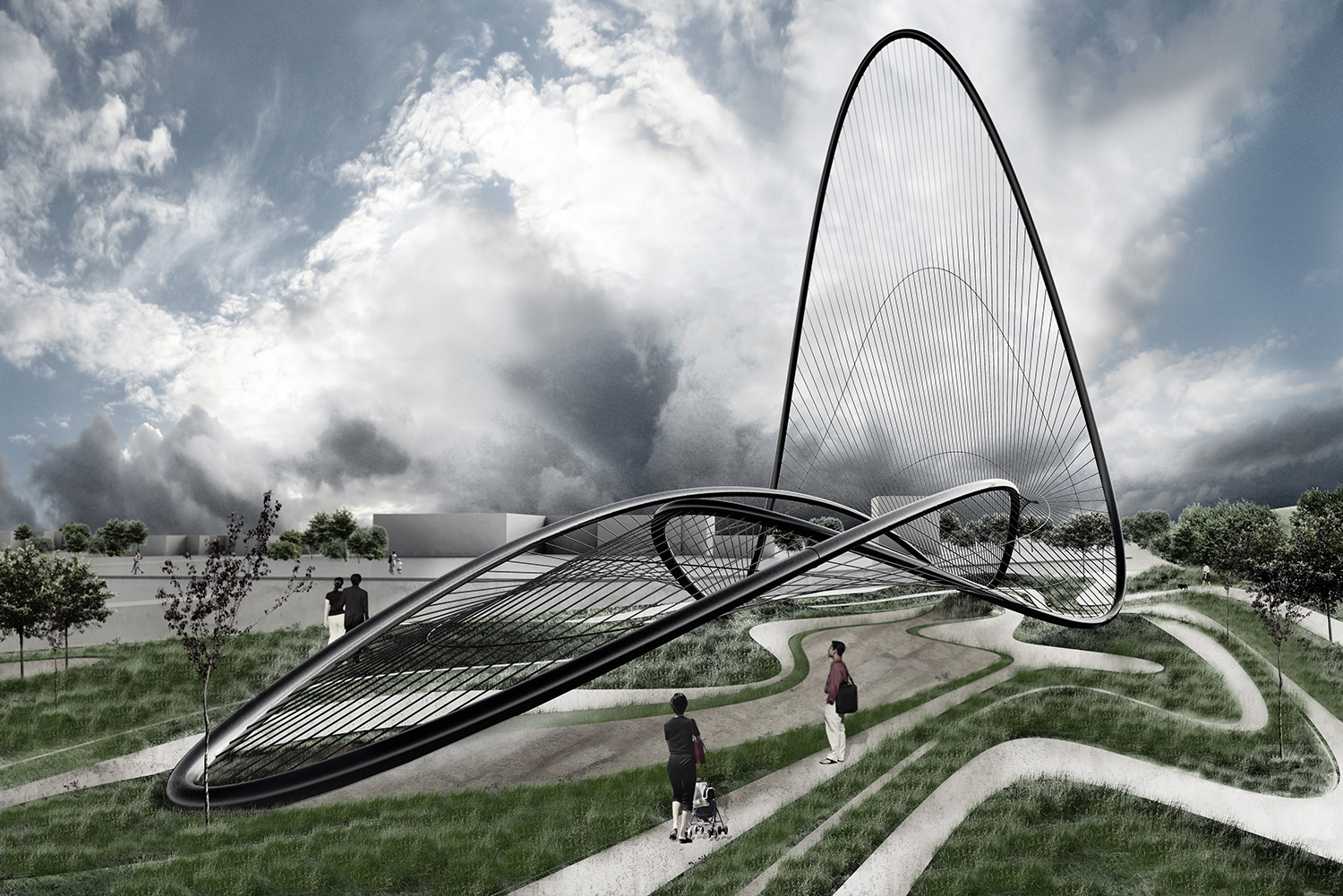
Jennifer Townley
Inverta
A circular axle is able to rotate by the use of 36 universal joints hanging from perspex rods and transmitting their rotary motion onto the next. In between the joints, 36 stainless steel objects are attached that rotate at the same speed as the axle. One of the objects has a slightly thinner body, making room for two integrated timing pulleys and thin cogged belts that connect it with the drive mechanism situated on the upper circular frame. The objects are made from thin sheet material and are carefully balanced by placing several counterweights inside their hollow bodies and by perforating their tails, reducing the amount of material furthest away from the axle. During the entire revolution their centre of gravity perfectly aligns with the position of the axle so that a stable rotation is ensured.
















